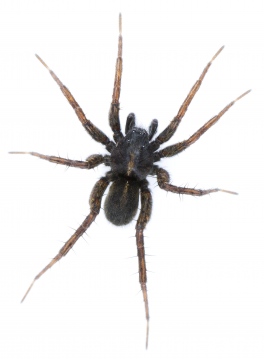Summary for Pardosa tenuipes (Araneae)
previous species | next species
National Distribution
Terms of Use. Double-click on map to go to region

Explore Regional Distribution
Please log on and add a note on this species
About this species
Recorded altitude range0m to 366m
Species text
DistributionMost records of this species are from southern England and Wales but there are scattered records as far north as south-west Scotland. It is widespread in western and central Europe but the species is not recorded from Scandinavia or Ireland.
Habitat and ecology
P. proxima can be found in a variety of sparsely vegetated habitats but typically occurs in moist and marshy places. The species is most likely to be found at coastal sites including earthy cliffs, saltmarsh, dune slacks and in streamside habitats including exposed riverine sediments. P. proxima has also been recorded from lowland heaths and gardens. Although this information is compiled from some quite recent records it is worth noting that the Rev. Octavius Pickard-Cambridge noted the species was present in his garden but he found it in abundance on the swampy flats at Studland 'whence the winters floods had retired' (Pickard-Cambridge 1879-81). Adults are found in spring and summer with males occurring from April to June and females occasionally persisting into August.
Status
Very local and often in small numbers, though the spider can be abundant in some habitats.
Threats
The loss of open habitats to seral succession is probably the most important threat.
Management and conservation
Where not already a natural feature of the habitat such as on cliffs, landslips and riverine situations, small scale rotational disturbance and and the retention or creation of topographical variation to provide seasonally wet habitats are likely to benefit this species.
Text based on Dawson, I.K., Harvey, P.R., Merrett, P. & Russell-Smith, A.R. (in prep.). References
Adult Season
Habitats
background methodology
Recorded management for locations with Pardosa tenuipes
Recorded substrate and hydrology for locations with Pardosa tenuipes
Images
sorry, no pictures available for this species yet - if you have an image please log on and upload it
See also A-Z Species Index - A-Z Picture Index - previous species | next species